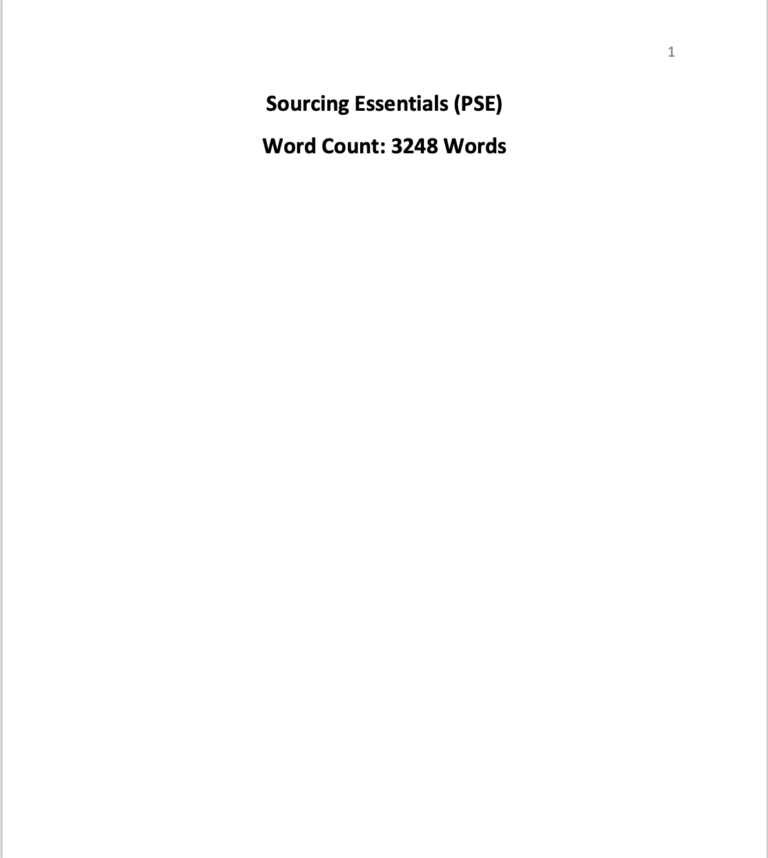Description
Solution
SECTION 2
1.4 Data Analysis
To calculate the percentage turnover for each department, I used the formula:
Turnover Percentage= (Total Employees/Leavers) ×100
2020
- Administration: 4/22×100=18.2%
- Maintenance: 5/9×100=55.6%
- Marketing: 0/4×100=0%
- Production: 70/231×100=30.3%
- People Team: 1/6×100=16.7%
- Research & Design: 1/4×100=25%
- Sales: 19/42×100=45.2%
- Packing & Dispatch: 21/36×100=58.3%
- Finance: 2/5×100=40%
2021
- Administration: 8/20×100=40%
- Maintenance: 3/8×100=37.5%
- Marketing: 0/4×100=0%
- Production: 3/2198×100=16.2%
- People Team: 0/6×100=0%
- Research & Design: 0/3×100=0%
- Sales: 3/35×100=8.6%
- Packing & Despatch: 6/15×100=40%
- Finance: 0/4×100=0%
2022
- Administration: 9/20×100=45%
- Maintenance: 3/8×100=37.5%
- Marketing: 1/4×100=25%
- Production: 3/8178×100=21.3%
- People Team: 3/6×100=50%
- Research & Design: 0/4×100=0%
- Sales: 0/40×100=0%
- Packing & Despatch: 8/16×100=50%
- Finance: 0/4×100=0%
2023
- Administration: 2/18×100=11.1%
- Maintenance: 1/7×100=14.3%
- Marketing: 0/4×100=0%
- Production: 29/181×100=16%
- People Team: 2/5×100=40%
- Research & Design: 1/4×100=25%
- Sales: 2/45×100=4.4%
- Packing & Despatch: 3/15×100=20%
- Finance: 0/3×100=0%
To calculate the overall turnover rate for the entire organization each year, we sum the total number of leavers and total employees, then apply the turnover formula:
Overall Turnover Percentage= (Total Employees/Total Leavers) ×100
2020:
- Total employees = 359
- Total leavers = 123
- Turnover: 123359×100=34.3%
2021:
- Total employees = 285
- Total leavers = 52
- Turnover: 52285×100=18.2%
2022:
- Total employees = 275
- Total leavers = 62
- Turnover: 62275×100=22.5%
2023:
- Total employees = 282
- Total leavers = 40
- Turnover: 40282×100=14.2%
Data Presentation
- Bar Graph-The following is the Bar Graph presenting the year-wise Turnover percentages of each department (2020-2023). It has a graphical display of the turnover rates by department making it less time consuming to determine departments with high or little turnover in the previous years.
Please click the following icon to access this assessment in full
Related Papers
(Solution) CIPS Sourcing Essentials Assessment
- In this assessment, sourcing approaches have been identified and holistically reviewed. This is in line with RCU organisation IT spend category. This is further compared with payment services, document management category which is office suppliers and postal services.
- For evaluating the identified spend categories, various tools have been selected which are Kraljic Analysis Tool, Mendelow’s Analysis Tool for Stakeholder analysis and the Maslow Hierarchy of needs.
- Further, by using the SWOT analysis, the internal and external factors of the sourcing have been selected. A further analysis by use of Peter Block Grid’s has been applied to evaluate the interests of stakeholders to source appropriate position.
- The findings indicate that RCU adopts the best sourcing approach based on their needs.
- Finally, by using Carter’s 10Cs model, the best practice for pursuing suppliers appraisal has been provided for IT spend category.
(Solution) CIPS ADNOC Advanced Practitioner Corporate Award (APDP)
(Solution) CIPD New 5HR03: Reward for Performance Contribution
(Solution) CIPS PSE Module 4- Sourcing Essentials in PS&M (PSE) Red Sea Global (RSG)
This assignment focuses on exploring different sourcing approaches and their relevance in a specific category of spend in Red Sea Global (RSG) organisation.
The spend category include leasing of construction equipment which are used in the organisation operations.
Also, sourcing approaches used in Information Technology (IT), logistics, staff uniforms, and vehicles have been equally evaluated. The sourcing approaches in line with CIPS guidance notes put into account are single, sole, dual and multiple sourcing.
The finding in this report highlight on the need for using the sourcing approaches to gain value for money outcomes and leveraging on competitive advantage. This is with best sourcing decision being the outcome of the process.
Additionally, by appropriate sourcing approach, the organisation is in a position of leveraging on competitive advantage successfully. For this report, multiple sourcing are appropriate if there is a need for engaging more than a single supplier with single sourcing engaging single supplier.
Conversely, sole sourcing are applied in a situation an organisation is making procurement from monopolistic suppliers in their area of practice.
Dual sourcing conversely is used when needs conflict with different suppliers involved for solving problems which result from engaging single or multiple sourcing strategy.
Considering RSG case organisation, using different sourcing approaches for various spend categories is evidenced from pre-awarding, after-awarding and post-awarding of contractors influenced by their relevance.
For ensuring sourcing approaches increase value for PS&M practice and maximise capacity for leveraging on supplier appraisal checklist, various recommendation could be provided. These are;
- Invest in technology and automation of their supply chain network for selection of best sourcing approach
- Improving overall engagement of stakeholders in different sourcing approaches
- Come up with appropriate specifications which are in alignment of procurement and supply chain policies
- Simplify significantly the information sourced pertaining to tendering and information sharing in the sourcing approaches used



